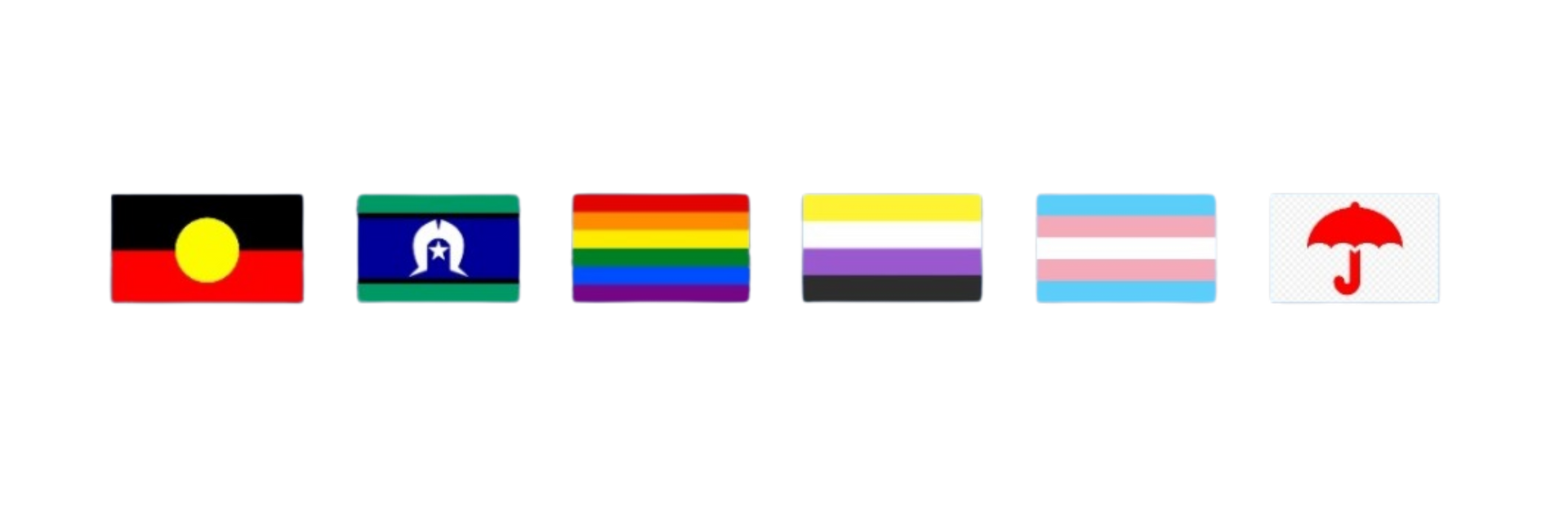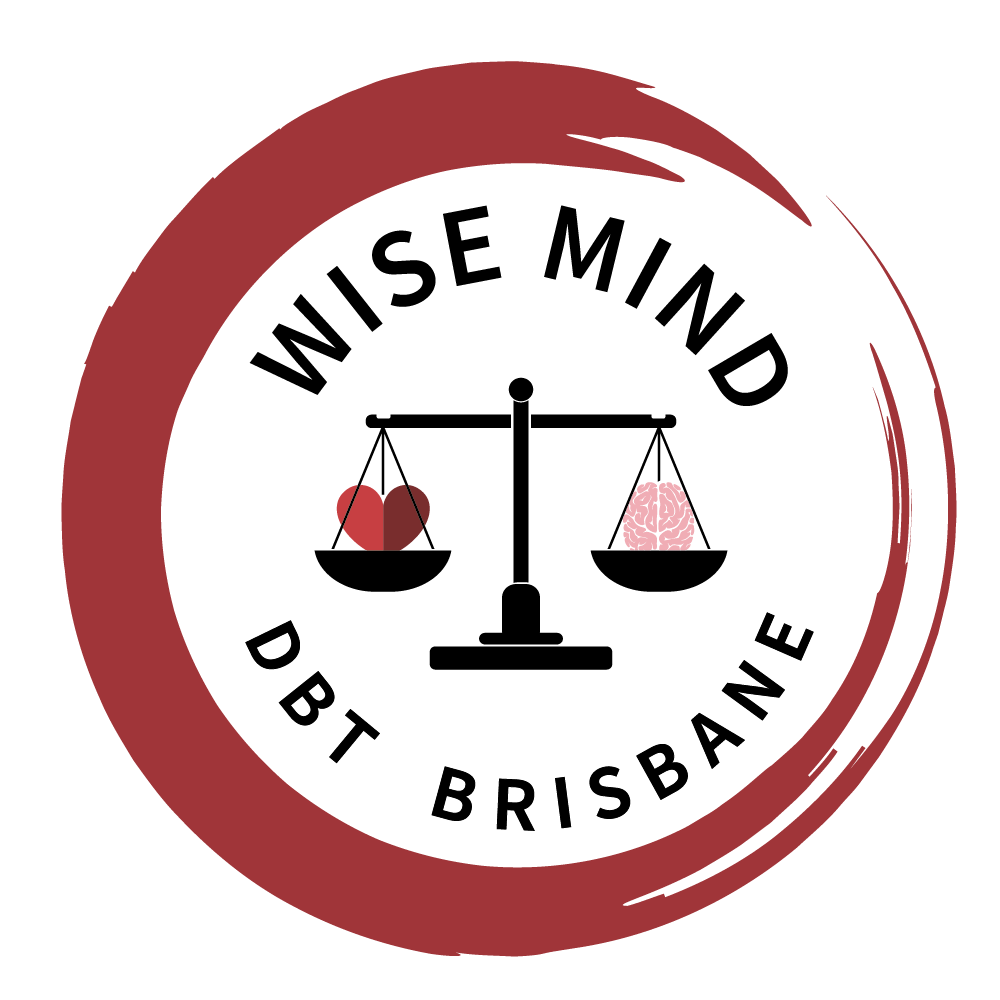Borderline Personality Disorder

By Jean-Gabrielle Short
•
September 18, 2024
In DBT, we identify three main dialectics: apparent competence versus active passivity, inhibited grieving versus unrelenting crisis, and self-invalidation versus emotional vulnerability . These dialectics represent the push and pull of emotional and behavioural patterns. Just as the ocean's waves are influenced by the moon and the weather, these dialectics are shaped by both our biology and our environment. Let's explore these dialectics and their secondary targets, using the metaphor of the ocean to guide our understanding. The Three Dialectics: Navigating the Tides Apparent Competence vs. Active Passivity: This dialectic can be likened to the waves that appear calm on the surface but conceal a strong undertow beneath. Apparent competence is the behaviour of seeming to handle everything smoothly, like a serene ocean, even when turmoil brews beneath. It's a learned pattern often developed in invalidating environments where showing vulnerability is discouraged. On the flip side, active passivity resembles being swept away by the current, feeling helpless and relying on others to rescue us. This vulnerability arises from a biological predisposition to intense emotional responses, influenced by the current environment's impact on our emotions. Inhibited Grieving vs. Unrelenting Crisis: This dialectic mirrors the waves that never seem to settle, crashing against the shore relentlessly. Inhibited grieving is like holding back the tide, refusing to let the waves of grief and loss wash over us. It often stems from past environments where emotions were dismissed or suppressed. Unrelenting crisis, on the other hand, is akin to a stormy sea, where the waves are constantly churning, and the person is in a state of perpetual crisis. This secondary target has a biological basis, with environmental triggers setting off intense emotional responses that feel overwhelming and unending. Self-Invalidation vs. Emotional Vulnerability: Picture the ocean during a storm—waves crashing against each other chaotically. Self-invalidation is like judging those turbulent waves, criticising ourselves for feeling as intensely as we do. This behaviour is often learned from environments where one's emotions were dismissed or minimised. Conversely, emotional vulnerability is being in the midst of the storm, feeling every gust of wind and wave of emotion deeply. It's a biological tendency to experience emotions intensely, influenced by how our current environment interacts with our emotional responses. The Fluidity of Waves: Switching Between Extremes Just as the ocean can change from calm to stormy in an instant, we can fluidly switch between these secondary targets in real-time. One moment, we might be the calm ocean, displaying apparent competence, and the next, we're caught in a rip current of active passivity. The same fluidity applies to the other dialectics. We may suppress our grief like the stillness before a storm (inhibited grieving) and suddenly find ourselves in the throes of an emotional hurricane (unrelenting crisis). The Impact of the Environment and Learning to Navigate Biological secondary targets such as emotional vulnerability, active passivity, and unrelenting crisis arise within us, much like how weather patterns can suddenly stir the ocean into motion. These responses are influenced by how our current environment interacts with our emotional sensitivity. Meanwhile, the patterns of apparent competence, inhibited grieving, and self-invalidation are often learned behaviours, developed over time in invalidating environments. These learned patterns are similar to how the ocean shapes the shoreline; repeated exposure to invalidation can carve deep grooves in our behaviour, leading us to question our emotional responses and suppress our grief. For many, this process of invalidation began early in life. They looked to others—parents, caregivers, or peers—to help make sense of their intense emotional experiences. But when their emotions were dismissed or not mirrored by others, they began to judge their own feelings as wrong or too much. Like a shoreline that learns to brace for the incoming tide, they learned to hide their emotions, pretend everything was okay, and feared being rejected as "emotionally weak." DBT Skill: Opposite Action One DBT skill that can be incredibly useful when addressing secondary targets is Opposite Action. This skill involves identifying an emotion and then taking action that is opposite to what that emotion is urging us to do. For example, if self-invalidation is causing you to withdraw and isolate, the opposite action would be to reach out for support or engage in activities that affirm your self-worth. Similarly, when dealing with inhibited grieving, rather than avoiding reminders of loss, opposite action encourages engaging in activities that help you connect with and express your grief in a healthy manner. This skill helps create new patterns of behaviour that counteract the extremes of the secondary targets, promoting emotional balance. Learning to Surf the Waves DBT teaches us to become skilled surfers of these emotional waves. Recognising these secondary targets and understanding how they manifest in our lives is the first step toward change. While everyone experiences these patterns to some degree, they can be more intense and frequent for those in treatment. By acknowledging the dialectics and the push and pull within us, we can learn to balance on the surfboard rather than being tossed around by the waves. Through DBT skills, such as mindfulness, distress tolerance, emotion regulation, interpersonal effectiveness, and opposite action, we can learn to ride the waves of emotion without being swept away. Instead of suppressing our grief like an inhibited tide, we can allow ourselves to feel and process our emotions. Rather than judging our vulnerability, we can learn to embrace it as a part of our human experience. The ocean is ever-changing, and so are we . By understanding the dialectics within DBT and recognising the patterns of our emotional waves, we can navigate our internal seas with greater compassion and skill. In doing so, we can learn not just to survive the stormy seas but to ride the waves with confidence and grace.

By Jean-Gabrielle Short
•
June 11, 2024
This week we explore Biosocial Theory and its role in understanding the development of Borderline Personality Disorder (BPD). This post aims to provide you with a compassionate and strengths-based perspective, empowering you with knowledge and hope for recovery through Dialectical Behaviour Therapy (DBT). What is the Biosocial Theory? Biosocial Theory offers a comprehensive context for understanding how BPD develops. According to this theory, BPD arises from the interplay between biological predispositions and social environmental factors. It posits that individuals with BPD are born with a heightened sensitivity to emotional stimuli, which can be exacerbated by invalidating environments. Let's break this down further. Biological Sensitivity People with BPD often have an innate biological sensitivity to emotions. This means they experience emotions more intensely, more quickly, and for longer durations than others. This heightened emotional sensitivity is a strength as it indicates a deep capacity for emotional connection and empathy. However, without effective coping strategies, it can also lead to emotional overwhelm. Invalidating Environment An invalidating environment is one where an individual's emotional experiences are dismissed, ignored, or punished. This environment can occur in various settings, including family, school, or peer relationships. When a person with high emotional sensitivity grows up in such an environment, they may struggle to understand and manage their emotions effectively. Invalidation can take many forms, such as: • Minimising Feelings : Comments like "You're overreacting" or "It's not a big deal" can make individuals feel that their emotions are not valid. • Criticism : Constant criticism or punishment for emotional expression can lead to self-doubt and a negative self-image. • Inconsistent Responses : Unpredictable or inconsistent responses to emotional needs can create confusion and insecurity. Development of BPD The interaction between biological sensitivity and an invalidating environment can contribute to the development of BPD. Over time, individuals may develop maladaptive coping mechanisms to manage their intense emotions. These might include self-harm, impulsive behaviours, and difficulty in maintaining stable relationships. It's important to note that BPD is not a result of personal failure or weakness but rather a response to challenging circumstances. The Role of Invalidating Environments in Exacerbating BPD Symptoms Invalidating environments play a significant role in exacerbating the symptoms of BPD. When individuals with high emotional sensitivity repeatedly experience invalidation, they may internalise the belief that their emotions are wrong or unacceptable. This internalised invalidation can lead to chronic self-doubt, shame, and difficulty trusting one's own emotional experiences. As a result, individuals may resort to extreme measures, such as self-harm or impulsive behaviours, to cope with their intense and often misunderstood emotions. Furthermore, the lack of consistent emotional support and validation can impede the development of effective emotional regulation skills, making it harder for individuals to navigate their emotional landscape healthily and constructively. Therefore, addressing the impact of invalidating environments is crucial in the therapeutic process to foster a sense of self-worth and emotional stability. The Role of DBT in Recovery Dialectical Behaviour Therapy (DBT) is specifically designed to address the challenges faced by individuals with BPD. DBT provides a structured and supportive environment where clients can learn to manage their emotions and develop healthier coping strategies. Here's how DBT can help: 1. Mindfulness : DBT teaches mindfulness skills to help individuals become more aware of their thoughts, feelings, and behaviours in a non-judgmental way. This awareness is the first step toward emotional regulation. 2. Distress Tolerance : DBT equips individuals with skills to tolerate distress and manage crises without resorting to harmful behaviours or making the situation worse. These skills empower individuals to navigate challenging situations with resilience. 3. Emotion Regulation : DBT provides tools to understand and regulate intense emotions. By learning to identify and label emotions accurately, individuals can respond to their feelings in a balanced and constructive manner. 4. Interpersonal Effectiveness : DBT helps individuals improve their communication and relationship skills. This fosters healthier, more stable relationships and reduces interpersonal conflicts. A Strengths-Based Approach At Wise-Mind DBT Brisbane we believe in a strengths-based approach to therapy. This means we focus on your inherent strengths and potential rather than your deficits. Here are some strengths we celebrate in individuals with BPD: • Emotional Intensity : Your capacity for deep emotional experiences is a gift that allows for profound empathy and connection with others . • Resilience : Despite the challenges you face, your ability to seek help and work towards healing demonstrates immense courage and resilience. • Creativity : Many individuals with BPD are highly creative and use their emotional depth to create meaningful art, music, and writing. • Passion : Your intense emotions often translate into a passionate commitment to causes and relationships that matter to you. Understanding Biosocial Theory provides valuable insight into the development of BPD. It highlights the importance of addressing both biological sensitivities and environmental factors in treatment. If you are considering engaging in DBT, know that you are taking a positive and proactive step towards your well-being. With the right support and skills, you can learn to navigate your emotions, build healthier relationships, and lead a fulfilling life. Remember, your journey towards recovery is unique, and your strengths are your greatest allies. We are here to support you every step of the way. Til next week, Jean

By Jean-Gabrielle Short
•
September 18, 2024
In DBT, we identify three main dialectics: apparent competence versus active passivity, inhibited grieving versus unrelenting crisis, and self-invalidation versus emotional vulnerability . These dialectics represent the push and pull of emotional and behavioural patterns. Just as the ocean's waves are influenced by the moon and the weather, these dialectics are shaped by both our biology and our environment. Let's explore these dialectics and their secondary targets, using the metaphor of the ocean to guide our understanding. The Three Dialectics: Navigating the Tides Apparent Competence vs. Active Passivity: This dialectic can be likened to the waves that appear calm on the surface but conceal a strong undertow beneath. Apparent competence is the behaviour of seeming to handle everything smoothly, like a serene ocean, even when turmoil brews beneath. It's a learned pattern often developed in invalidating environments where showing vulnerability is discouraged. On the flip side, active passivity resembles being swept away by the current, feeling helpless and relying on others to rescue us. This vulnerability arises from a biological predisposition to intense emotional responses, influenced by the current environment's impact on our emotions. Inhibited Grieving vs. Unrelenting Crisis: This dialectic mirrors the waves that never seem to settle, crashing against the shore relentlessly. Inhibited grieving is like holding back the tide, refusing to let the waves of grief and loss wash over us. It often stems from past environments where emotions were dismissed or suppressed. Unrelenting crisis, on the other hand, is akin to a stormy sea, where the waves are constantly churning, and the person is in a state of perpetual crisis. This secondary target has a biological basis, with environmental triggers setting off intense emotional responses that feel overwhelming and unending. Self-Invalidation vs. Emotional Vulnerability: Picture the ocean during a storm—waves crashing against each other chaotically. Self-invalidation is like judging those turbulent waves, criticising ourselves for feeling as intensely as we do. This behaviour is often learned from environments where one's emotions were dismissed or minimised. Conversely, emotional vulnerability is being in the midst of the storm, feeling every gust of wind and wave of emotion deeply. It's a biological tendency to experience emotions intensely, influenced by how our current environment interacts with our emotional responses. The Fluidity of Waves: Switching Between Extremes Just as the ocean can change from calm to stormy in an instant, we can fluidly switch between these secondary targets in real-time. One moment, we might be the calm ocean, displaying apparent competence, and the next, we're caught in a rip current of active passivity. The same fluidity applies to the other dialectics. We may suppress our grief like the stillness before a storm (inhibited grieving) and suddenly find ourselves in the throes of an emotional hurricane (unrelenting crisis). The Impact of the Environment and Learning to Navigate Biological secondary targets such as emotional vulnerability, active passivity, and unrelenting crisis arise within us, much like how weather patterns can suddenly stir the ocean into motion. These responses are influenced by how our current environment interacts with our emotional sensitivity. Meanwhile, the patterns of apparent competence, inhibited grieving, and self-invalidation are often learned behaviours, developed over time in invalidating environments. These learned patterns are similar to how the ocean shapes the shoreline; repeated exposure to invalidation can carve deep grooves in our behaviour, leading us to question our emotional responses and suppress our grief. For many, this process of invalidation began early in life. They looked to others—parents, caregivers, or peers—to help make sense of their intense emotional experiences. But when their emotions were dismissed or not mirrored by others, they began to judge their own feelings as wrong or too much. Like a shoreline that learns to brace for the incoming tide, they learned to hide their emotions, pretend everything was okay, and feared being rejected as "emotionally weak." DBT Skill: Opposite Action One DBT skill that can be incredibly useful when addressing secondary targets is Opposite Action. This skill involves identifying an emotion and then taking action that is opposite to what that emotion is urging us to do. For example, if self-invalidation is causing you to withdraw and isolate, the opposite action would be to reach out for support or engage in activities that affirm your self-worth. Similarly, when dealing with inhibited grieving, rather than avoiding reminders of loss, opposite action encourages engaging in activities that help you connect with and express your grief in a healthy manner. This skill helps create new patterns of behaviour that counteract the extremes of the secondary targets, promoting emotional balance. Learning to Surf the Waves DBT teaches us to become skilled surfers of these emotional waves. Recognising these secondary targets and understanding how they manifest in our lives is the first step toward change. While everyone experiences these patterns to some degree, they can be more intense and frequent for those in treatment. By acknowledging the dialectics and the push and pull within us, we can learn to balance on the surfboard rather than being tossed around by the waves. Through DBT skills, such as mindfulness, distress tolerance, emotion regulation, interpersonal effectiveness, and opposite action, we can learn to ride the waves of emotion without being swept away. Instead of suppressing our grief like an inhibited tide, we can allow ourselves to feel and process our emotions. Rather than judging our vulnerability, we can learn to embrace it as a part of our human experience. The ocean is ever-changing, and so are we . By understanding the dialectics within DBT and recognising the patterns of our emotional waves, we can navigate our internal seas with greater compassion and skill. In doing so, we can learn not just to survive the stormy seas but to ride the waves with confidence and grace.

By Jean-Gabrielle Short
•
June 11, 2024
This week we explore Biosocial Theory and its role in understanding the development of Borderline Personality Disorder (BPD). This post aims to provide you with a compassionate and strengths-based perspective, empowering you with knowledge and hope for recovery through Dialectical Behaviour Therapy (DBT). What is the Biosocial Theory? Biosocial Theory offers a comprehensive context for understanding how BPD develops. According to this theory, BPD arises from the interplay between biological predispositions and social environmental factors. It posits that individuals with BPD are born with a heightened sensitivity to emotional stimuli, which can be exacerbated by invalidating environments. Let's break this down further. Biological Sensitivity People with BPD often have an innate biological sensitivity to emotions. This means they experience emotions more intensely, more quickly, and for longer durations than others. This heightened emotional sensitivity is a strength as it indicates a deep capacity for emotional connection and empathy. However, without effective coping strategies, it can also lead to emotional overwhelm. Invalidating Environment An invalidating environment is one where an individual's emotional experiences are dismissed, ignored, or punished. This environment can occur in various settings, including family, school, or peer relationships. When a person with high emotional sensitivity grows up in such an environment, they may struggle to understand and manage their emotions effectively. Invalidation can take many forms, such as: • Minimising Feelings : Comments like "You're overreacting" or "It's not a big deal" can make individuals feel that their emotions are not valid. • Criticism : Constant criticism or punishment for emotional expression can lead to self-doubt and a negative self-image. • Inconsistent Responses : Unpredictable or inconsistent responses to emotional needs can create confusion and insecurity. Development of BPD The interaction between biological sensitivity and an invalidating environment can contribute to the development of BPD. Over time, individuals may develop maladaptive coping mechanisms to manage their intense emotions. These might include self-harm, impulsive behaviours, and difficulty in maintaining stable relationships. It's important to note that BPD is not a result of personal failure or weakness but rather a response to challenging circumstances. The Role of Invalidating Environments in Exacerbating BPD Symptoms Invalidating environments play a significant role in exacerbating the symptoms of BPD. When individuals with high emotional sensitivity repeatedly experience invalidation, they may internalise the belief that their emotions are wrong or unacceptable. This internalised invalidation can lead to chronic self-doubt, shame, and difficulty trusting one's own emotional experiences. As a result, individuals may resort to extreme measures, such as self-harm or impulsive behaviours, to cope with their intense and often misunderstood emotions. Furthermore, the lack of consistent emotional support and validation can impede the development of effective emotional regulation skills, making it harder for individuals to navigate their emotional landscape healthily and constructively. Therefore, addressing the impact of invalidating environments is crucial in the therapeutic process to foster a sense of self-worth and emotional stability. The Role of DBT in Recovery Dialectical Behaviour Therapy (DBT) is specifically designed to address the challenges faced by individuals with BPD. DBT provides a structured and supportive environment where clients can learn to manage their emotions and develop healthier coping strategies. Here's how DBT can help: 1. Mindfulness : DBT teaches mindfulness skills to help individuals become more aware of their thoughts, feelings, and behaviours in a non-judgmental way. This awareness is the first step toward emotional regulation. 2. Distress Tolerance : DBT equips individuals with skills to tolerate distress and manage crises without resorting to harmful behaviours or making the situation worse. These skills empower individuals to navigate challenging situations with resilience. 3. Emotion Regulation : DBT provides tools to understand and regulate intense emotions. By learning to identify and label emotions accurately, individuals can respond to their feelings in a balanced and constructive manner. 4. Interpersonal Effectiveness : DBT helps individuals improve their communication and relationship skills. This fosters healthier, more stable relationships and reduces interpersonal conflicts. A Strengths-Based Approach At Wise-Mind DBT Brisbane we believe in a strengths-based approach to therapy. This means we focus on your inherent strengths and potential rather than your deficits. Here are some strengths we celebrate in individuals with BPD: • Emotional Intensity : Your capacity for deep emotional experiences is a gift that allows for profound empathy and connection with others . • Resilience : Despite the challenges you face, your ability to seek help and work towards healing demonstrates immense courage and resilience. • Creativity : Many individuals with BPD are highly creative and use their emotional depth to create meaningful art, music, and writing. • Passion : Your intense emotions often translate into a passionate commitment to causes and relationships that matter to you. Understanding Biosocial Theory provides valuable insight into the development of BPD. It highlights the importance of addressing both biological sensitivities and environmental factors in treatment. If you are considering engaging in DBT, know that you are taking a positive and proactive step towards your well-being. With the right support and skills, you can learn to navigate your emotions, build healthier relationships, and lead a fulfilling life. Remember, your journey towards recovery is unique, and your strengths are your greatest allies. We are here to support you every step of the way. Til next week, Jean
Need More Info?
Contact Us
Thanks for your message!
I'll get back to you as soon as I can.
Oops, there was an error sending your message.
Please try again later.
Please try again later.
In the spirit of reconciliation Wise-Mind DBT Brisbane acknowledges the Traditional Custodians of country we live and work. We acknowledge the Yuggera and Turrbal peoples and their connections to land, sea and community. We pay our respect to their Elders past and present and extend that respect to all Aboriginal and Torres Strait Islander peoples today.
We acknowledge that sovereignty was never ceded.

Group Skills Programs
0478 589 673
admin@wise-mind.com.au
141 Melbourne Street,
South Brisbane 4101
© 2025
All Rights Reserved | Wise-Mind DBT Brisbane



